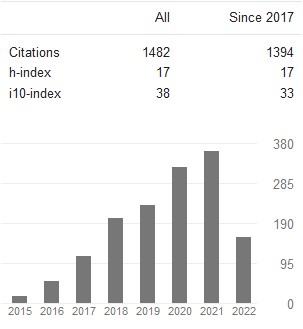Alzheimer’s disease and attempts to find an effective treatment (Review)
Abstract
The most common neurodegenerative disease is Alzheimer’s disease (AD) and according to the World Health Organization, there are about 10 million new cases are recorded every year. It seems likely that damage to the brain starts a decade or more before memory and other cognitive problems appear. For most people with late-onset variety, symptoms of Alzheimer’s first appear in their mid-60s. While those with early- onset, signs begin between a person’s 30s and mid-60s. Whereas the exact etiology of the disease is unknown, observational research has suggested many hypotheses that describe the pathogenesis of the disease, as considerable advances in understanding the pathology have contributed to an early diagnosis, particularly the exact neuroanatomical setting of plaques. Accordingly, magnetic resonance imaging has been considered as the primarily adjunctive modality for the constant detection of abnormality. In addition, the analysis of cerebrospinal fluid contents has also been of interest for the diagnosis. These resulted in a broad variety of therapies that considerably control the activity and change the course and prognosis of the disease. In the present review, we evaluate the current state of knowledge on Alzheimer with emphasis on the pathology itself, the diagnosis and common therapeutical approaches accurately used
Keywords:
Alzheimer disease, pathology, Diagnosis, treatmentDownloads
Published
How to Cite
Issue
Section
Copyright (c) 2022 Yasmin Maher Helmy, Ahmed M. A. Akabawy, Laila A. Rashed, Sahar A. Ali

This work is licensed under a Creative Commons Attribution-NonCommercial-ShareAlike 4.0 International License.



 Journal of Innovations in Pharmaceutical and Biological Sciences is licensed under a Creative Commons Attribution-NonCommercial-ShareAlike 4.0 International License. Based on a work at
Journal of Innovations in Pharmaceutical and Biological Sciences is licensed under a Creative Commons Attribution-NonCommercial-ShareAlike 4.0 International License. Based on a work at